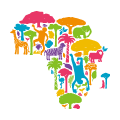1. Approach’s Outline and Features
This approach helps create a plan to manage wetlands in Uganda 1) based on scientific information and 2) sustainably with its organization.
1) Wetland Management Plan based on scientific information
Scientific data were collected and input into the upgraded National Wetland Information System (NWIS), based on which the wetland management plan was created.
2) Sustainable Wetland Management Plan with government organization
- Capacity-building for government officers
Capacity-building for government officers was implemented with the following procedures:
a) Conducting a capacity-training needs assessment
b) Developing a Wetland Management Manual
c) Implementing training programs in Uganda and Japan

(Source: JICA Website)
- Harmonization of the wetland management plan with existing policies, laws and regulations
Existing policies, laws and regulations considered as having the potential to impede efforts to implement the wetland management plan were identified and reviewed. Based on the result, certain recommendations to avoid friction between these policies and the plan were put forward.
KeyWords
Sustainable Wetland Management Plan, Wetland Assessment, Scientific information, Capacity-Building
2. Description of the project from which the approach is derived
2-1. Introduction
In Uganda, given the lack of a proper wetland management plan and the required information and data, land was cleared without evaluating the conservation value of the wetland. This raised concerns that the soil and water of the wetlands would be excessively disturbed, harming the habitat of the birds, fish and amphibians that call it home. Accordingly, the project named “National Wetlands Management Project in the Republic of Uganda” was implemented to promote sustainable management of wetlands based on scientific data and create wetland management plans in the Namatala-Doho Wetland and Awoja Wetland systems.
2-2. Details of measures taken
- Upgrading the National Wetland Information System (NWIS)
The existing NWIS was upgraded by assessing where scientific information was lacking and re-designing the system. - Collecting scientific wetland information
Scientific data on national wetlands were collected by reviewing existing information and implementing wetland surveys. The major survey items were described below:- Ecosystem Assessment
- Wetland Use and Livelihood Assessment
- Assessment of the Flood-Control Function
- Preliminary Assessment of Soil Erosion and Sediment Yield
- Sedimentation Monitoring
- Water Quality Assessment
- Rural Biomass Energy Assessment
- Creating a Wetland Management Plan
Based on the above scientific wetland information, the project supported efforts to create the wetland management plan. The project discussed the key issues of managing the wetland with community members, then reflected them in the management plan.
After creating the Wetland Management Plan, the project supported efforts to create the Sub-County and District Wetland Action Plan. All the stakeholders, including community leaders, participated in the process of creating these plans. - Implementation of pilot activities
The project implemented the pilot activities based on the Sub-County wetland action plan in the selected pilot sites. - Harmonization of the wetland management plan with existing policies, laws and regulations
The project made some recommendations to the Ugandan government to strengthen the policy framework, given certain issues with existing policies, laws and regulations for managing wetlands sustainably. For example, the project highlighted no reference made to the need to protect biodiversity in the existing government wetland guideline. Accordingly, the project suggested that it should be included in the same. - Capacity-building for government officers
The project implemented capacity-building for government officers via the following procedures:
a) Conducting a capacity training needs assessment
The project issued questionnaires and interviews to determine the capacity and needs of government officers.
b) Developing the Wetland Management Manual
The project created the Manual and submitted it to the local government officers.
c) Implementing training programs in Uganda and Japan
The project conducted nationwide wetland management training three times in Uganda, in which a total of 314 District officers participated. The project also held training programs in Japan, in which a total of ten government officers participated.
(Perspectives on sustainability)
This approach made the NWIS data open to the public and accessible without using specific software to ensure as many people as possible could refer to the same.


Source (JICA web site)
3. Analysis of the approach
3-1. Impact
- The ecological character of the wetland was improved by creating protection zones and planting trees along with pertinent water bodies in the pilot sites.
- The project questionnaire revealed that over half the central and local government officers overseeing pilot sites became able to understand and utilize wetland management manuals.
- The community’s awareness of wetland conservation was enhanced by 18% compared to 2015 and 2016.
3-2. Lessons learned
- Creating an effective wetland management plan depends on considering wetland-related plans, like natural resource management.
- Adopting the wetland management plan into the local government development plan is important to ensure the plan works practically.
- There is a need to carefully select the stakeholders involved in the planning process of the wetland management plan, given that management plan affects wide-ranging stakeholders.
4. Relevant information
| NbS Approach Category | 3-5. 19 |
| Title of the project from which the approach is derived | National Wetlands Management Project in the Republic of Uganda |
| Country | Republic of Uganda |
| Biome | Wetland / Savanna |
| Implementing term | 2012/March – 2016/December |
| Implementing organizations | CTI Engineering International Co., LTD OYO International Cooperation Earth & Human Cooperation |
| Supporting organizations | Japan International Cooperation Agency (JICA) |
| Report/Tool/Guideline | ・Project Completion Report ・National Wetland Information System ・Decision Support System (DSS) ・District Wetland Action Plans ・Sub-county Wetland Action Plans ・Wetland System Management Plans ・Community-based wetland management plans ・Wetland Management Manual |
| Contributors to this article | Leo Watanabe /Oriental Consultants Global |

